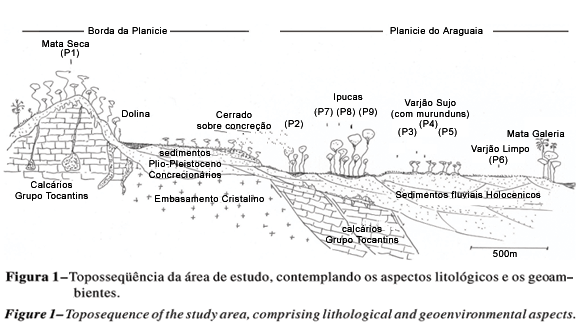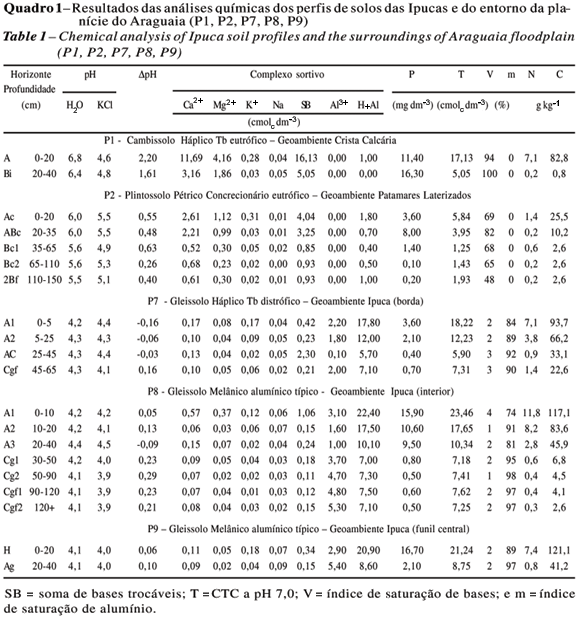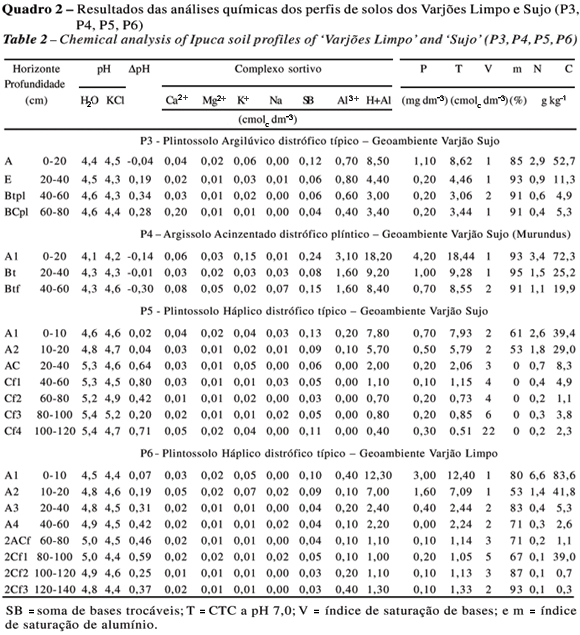Amongst the landscape features of Mid Araguaia river valley, there are vast coalesced floodplains and waterlogging depressions, all seasonally inundated. There, scattered forest fragments are found, being regionally called 'Ipucas', with peculiar floristic and geomorphic features. These forest fragments are elements of the natural transition zone (ecotone) between Amazonia Forest and Cerrado. We selected an area of approximately 8.200 ha in the municipality of 'Lagoa da Confusão', for detailed studies of nine soil profiles. All pedoenvironments were characterized, with emphasis on the Ipucas and their ecological relationships. There is a dominance of nutrient-depleted soils, most with gleying and plinthite, with varying amounts of organic carbon. Except for the Eutrophic Haplic Cambisols on calcareous substrate from the elevated border, all soils from the floodplain (Dystrophic Plinthosols and Gleysols) are acid and nutrient-poor, even under 'Ipucas' forest formation. In the Ipucas, organic matter accumulates due to acid-reducing condition, being extremely fragile to human intervention. For this reason, and considering the low degree of connection between forest fragments, Ipucas should be considered as permanent protected areas, being closely related to the overall hydrological cycle of the Araguaia floodplain.
Landscape ecology; pedoenvironment; floodplain ecology; forest fragments; ecotones; Plinthosols; Gleysols








